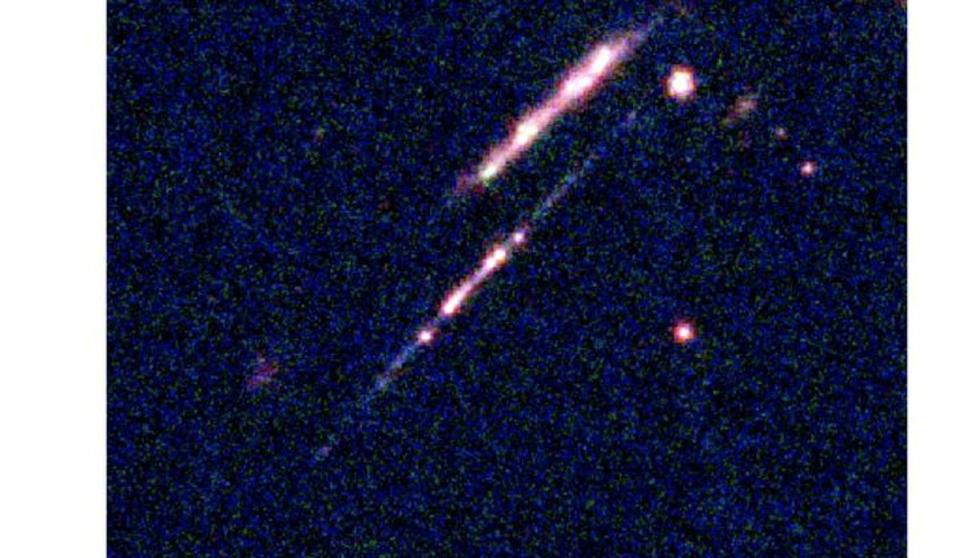Breakthrough Nasa image shows ‘Cosmic Gems’ that could help solve mystery of how the universe formed

New images of a distant young galaxies could help solve the mystery of how the stars that surround us firs formed, according to scientists.
The new pictures come from Nasa’s James Webb Space Telescope and shows the galaxy Cosmic Gems arc. They confirm that the light from that galaxy was sent out when the universe was only 460 million years ago.
The galaxy is notable because it shows an effect called gravitational lensing, when the curvature of space time works something like a magnifying glass. That has not been seen in other galaxies of a comparable age, and so the Cosmic Gems arc offers a unique opportunity to look relatively closely at the beginnings of our universe.
Using that magnification, scientists were able to look at the smaller structures inside that infant galaxy. And they spotted that it has five young massive star clusters, where stars are formed.

“The surprise and astonishment was incredible when we opened the JWST images for the first time,” said Angela Adamo, from Stockholm University, who led the work.
The galaxies offer new insights about galaxies during the “Epoch of Reionization”. That marks a period, in the first billion years after the Big Bang, when the universe went from being filled with neutral hydrogen gas to becoming fully ionised – a process that is thought to have been driven by the universe’s first galaxies.
Researchers hope to learn more about that process in part because it will offer important clues to how the stars and galaxies came to exist in the first place. But it remains largely mysterious, and one of the most difficult challenges posed to astronomers.
They hope to learn more by looking deep into space. Because the light from those distant galaxies has taken so long to reach us, it can allow scientists to effectively look back in time, seeing the object when its light originally left.
That is difficult when studying the early universe, however, since those objects are so far away. That means that they cannot be resolved in sufficient detail – unless scientists are able to use gravitational lensing.
The light from the newly examined galaxies has passed through one of those gravitational lenses on its way to Earth. As such, scientists could use the Webb telescope to see the distant galaxy in fine detail – despite it having come from just 460 million years after the big bang, just 3 per cent of its current age.
Eventually, the star clusters seen in the new images will go on to become globular clusters, of the kind we have seen more close to us. Scientists hope to understand that process – and how it goes on to form the stars and galaxies that surround us.
“It was incredible to see the JWST images of the Cosmic Gems arc and realise that we were looking at star clusters in such a young galaxy,” said Professor Adamo. “We observe globular clusters around local galaxies, but we don’t know when and where they formed.
“The Cosmic Gems arc observations have opened a unique window for us into the works of infant galaxies as well as showing us where globular clusters formed.”
The work is described in a new paper, ‘Bound star clusters observed in a lensed galaxy 460 Myr after the Big Bang’, published in Nature.

 Yahoo News
Yahoo News 
